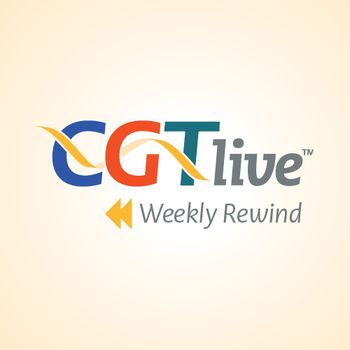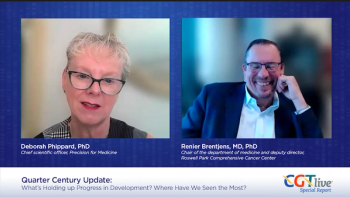
Manali Kamdar, MD, on a Large Scale Analysis of CRS/ICANS in Patients Receiving Liso-Cel
The associate professor of medicine–hematology and clinical director of lymphoma services at the University of Colorado discussed an analysis of more than 1,500 patients treated with liso-cel across clinical trials and the real world.
Bristol Myers Squibb's lisocabtagene maraleucel (liso-cel, marketed as Breyanzi), a chimeric antigen receptor (CAR) T-cell therapy FDA-approved for several hematologic malignancy indications, has become a fixture of standard care in recent years. Although, the need to monitor for potentially serious adverse events, especially cytokine release syndrome (CRS) and immune effector cell-associated neurotoxicity syndrome (ICANS), can become a barrier to accessiblity for some patients.
At
CGTLive: Can you give some background context about your presentation?
Manali Kamdar, MD: My ASCO 2025 presentation focuses on postinfusion safety monitoring after treatment with liso-cel, a CD19-directed CAR T-cell therapy approved for several B-cell malignancies. While liso-cel has demonstrated meaningful efficacy, the need for prolonged monitoring—typically requiring patients to stay near certified centers for at least 4 weeks—can be a major barrier to access. We wanted to explore whether real-world and clinical trial data could help personalize that monitoring window
What are some of the key data points you are presenting?
We evaluated safety data from over 1,500 patients, combining pivotal clinical trial results and real-world experience from the CIBMTR registry. The headline finding: 96% of CRS and ICANS events occurred within the first 15 days of infusion. Specifically, 98% of CRS and 88% of neurologic events in clinical trials, and 97% and 95% in the real-world data, occurred by Day 15. Late-onset events were rare, usually low grade, and manageable—often without hospitalization or ICU care.
How would you summarize the big-picture implications that doctors and the broader healthcare community should take away from this new data?
The consistency and predictability of liso-cel’s safety profile across both trials in various subtypes of lymphoma and the real world in DLBCL suggest we can move toward a risk-adapted, individualized approach to postinfusion monitoring. For some patients, it may be safe to shorten the monitoring period—reducing travel, cost, and caregiver burden—without compromising safety. This could be a meaningful step toward improving equitable access to CAR T-cell therapy
What are the next steps for this research?
Next steps involve working with clinical stakeholders, regulators, and patient advocates to determine how safety data like this can inform updated monitoring guidelines.
Is there anything not covered by the previous questions that you want to share with our audience?
Yes—these data reinforce that CAR-T therapy has matured, and with that comes the opportunity to refine not only who receives it, but how we deliver it. As we expand its use across earlier lines and more indications, optimizing supportive care and reducing barriers to access will be just as important as the therapy itself. That’s the direction this work is pointing us toward.
This transcript has been edited for clarity.
REFERENCE
1. Kamdar M. Optimizing post–chimeric antigen receptor (CAR) T cell monitoring: Evidence across lisocabtagene maraleucel (liso-cel) pivotal clinical trials and real-world experience. Presented at the 2025 ASCO Annual Meeting, held May 30 to June 3, in Chicago, Illinois. Abstract #7026
Newsletter
Stay at the forefront of cutting-edge science with CGT—your direct line to expert insights, breakthrough data, and real-time coverage of the latest advancements in cell and gene therapy.










































